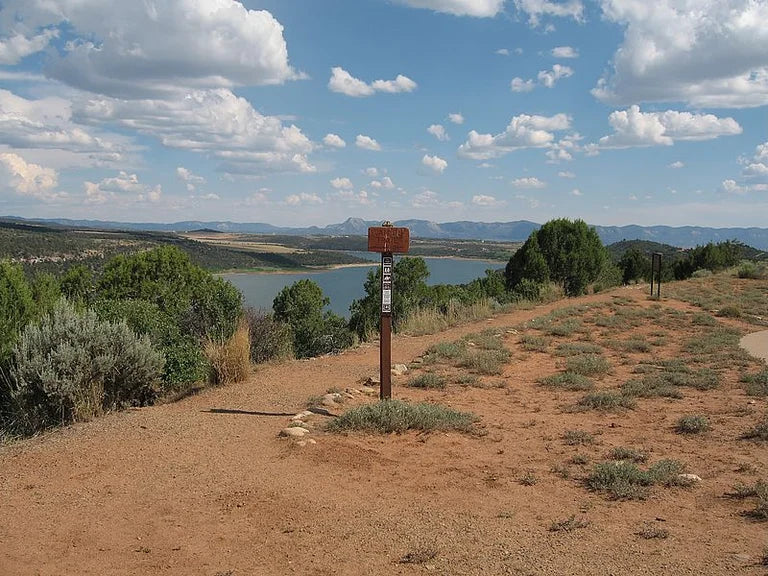Hiking offers a profound connection to nature, a chance to experience the serene beauty of untouched landscapes. But with this privilege comes responsibility. The Leave No Trace principles are more than guidelines; they are a commitment to preserving these natural wonders for future generations. Here are 10 best hiking tips that embody these principles, helping you minimize your environmental impact and contribute to hiking conservation.
10 Best Hiking Tips to Leave No Trace and Conserve Trails
1. Plan Ahead and Prepare
Preparation is the foundation of responsible hiking. Thorough planning not only ensures your safety but also helps protect the environment. Start by researching your destination. Understand the local regulations, obtain necessary permits, and check the weather forecast. This knowledge helps you avoid areas that are vulnerable during certain seasons, such as nesting grounds or areas prone to erosion.
Did you know that high-traffic trails can suffer from compaction, which reduces soil aeration and affects plant root growth? By planning your trips during off-peak times, you help reduce this impact.
Use our 10 Best Bushcraft Backpacks guide to find durable, functional gear that helps you stay prepared while minimizing your footprint.
2. Travel and Camp on Durable Surfaces
One of the core principles of Leave No Trace is to minimize our impact on the land. Always stick to established trails and campsites. Traveling off-trail can damage delicate vegetation and lead to soil erosion. When setting up camp, choose durable surfaces such as rock, gravel, or dry grass to minimize your impact.
Vegetation trampling can alter plant community structure and decrease biodiversity. Studies show that areas with high foot traffic often have reduced plant cover and altered species composition.
Imagine your favorite trail being overgrown and unusable because too many hikers strayed from the path. Let’s keep our trails beautiful and accessible by sticking to the designated routes.
3. Dispose of Waste Properly
Nothing disrupts the beauty of nature like litter. Pack out everything you bring in, including all trash, food scraps, and even biodegradable waste. Orange peels and apple cores might decompose, but they can take months and can harm local wildlife by introducing non-native substances.
Organic waste can attract animals and disrupt their natural foraging behavior. Orange peels, for example, contain natural insecticides that can harm local insects, disrupting the ecosystem.
Ever wondered what happens to that orange peel you tossed into the bushes? It takes months to decompose and can harm local wildlife. Let’s pack out all waste to protect the ecosystem.
4. Leave What You Find
Natural objects and cultural artifacts are part of the wilderness’s charm. Removing rocks, plants, or historical items disrupts ecosystems and diminishes the experience for others. Instead, take photographs and leave these treasures for others to enjoy.
Removing even a single rock can disrupt microhabitats and the species that rely on them. Historical artifacts provide cultural context and should remain undisturbed for educational and preservation purposes.
Snap a photo instead of taking a souvenir. This way, you can preserve the memory without damaging the environment.
5. Minimize Campfire Impact
Campfires are a beloved part of camping but can cause lasting damage if not handled properly. Use a camp stove for cooking and consider a small, controlled fire in an established fire ring for ambiance. Always ensure your fire is completely extinguished before leaving.
Campfires can sterilize soil, kill microorganisms, and leave long-lasting scars on the landscape. Using a portable stove is a more sustainable option that leaves no trace.
Picture this: a spark from an unattended fire causing a wildfire. Avoid such tragedies by opting for a stove and being meticulous with fire safety.
6. Respect Wildlife
Observing wildlife is one of the joys of hiking, but it's essential to keep a respectful distance. Feeding animals can disrupt their natural behaviors and diets, leading to dependency and health issues. Use binoculars or a zoom lens to enjoy wildlife from afar without causing stress.
Human food can cause digestive issues in wildlife and alter their natural foraging habits. This dependency can lead to increased human-wildlife conflicts and even harm the animals.
Feeding a cute chipmunk might seem harmless, but it can lead to dependency and aggressive behavior. Let’s admire wildlife without interfering with their natural way of life.
7. Be Considerate of Other Visitors
A crowded trail can quickly lose its charm. Be mindful of others by keeping noise levels low and yielding the trail when necessary. This ensures everyone has a pleasant experience in nature.
Noise pollution can disturb wildlife and other hikers, reducing the natural experience. Maintaining a quiet demeanor helps preserve the tranquility of the environment.
Early mornings and weekdays are typically less crowded. Plan your hikes during these times for a more serene experience.
8. Use Proper Footwear

Wearing the right footwear not only protects your feet but also helps preserve the trail. Shoes with good traction reduce soil erosion and help maintain the trail’s integrity.
Erosion caused by improper footwear can lead to increased runoff and sedimentation in nearby water bodies, negatively impacting aquatic habitats.
Your hiking boots can either be a trail’s best friend or its worst enemy. Choose wisely and step lightly.
9. Stick to the Trail
It can be tempting to explore off-trail, but this can cause significant damage to the environment. Stick to marked trails to protect plant life and prevent soil erosion.

Off-trail hiking can lead to the trampling of vegetation and soil compaction, which reduces water infiltration and increases runoff, exacerbating erosion.
What looks like a shortcut today could become a permanently damaged area tomorrow. Let’s keep our trails intact by staying on the designated path.
10. Educate Others
Knowledge is power. Share what you’ve learned about Leave No Trace principles with fellow hikers. The more people practice these guidelines, the better we can protect our natural spaces.
Education and awareness are key to fostering a culture of conservation. Studies show that informed hikers are more likely to practice sustainable behaviors.
Lead by example and gently remind others of these principles if you see them straying from the path. Your actions can inspire others to follow suit.
By following these 10 best hiking tips, you can play a vital role in hiking conservation and Leave No Trace efforts. Let’s commit to protecting our trails and natural spaces for generations to come. Share these tips, practice them diligently, and encourage others to do the same. Together, we can make a significant impact.
Ready to make a difference on your next hike? Join our Be Bushcrafted community for more tips and resources on sustainable outdoor practices. Sign up with your email to receive a free e-book on sustainable wild camping and a 10% discount on your first purchase. Let’s protect the wilderness together!
Dont Forget to FOLLOW Be Bushcrafted on Social Media
Instagram | FaceBook | TikTok


Share:
Why Fast Fashion is Failing the Planet—and How to Make a Real Difference
Why Planting Native Flowers is the Best Thing You Can Do for Our Pollinators